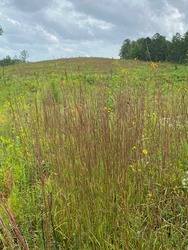Tropical Checkered-Skipper Burnsius oileus
Butterfly: Wingspan: 1 to 1½ inches (2.5 - 3.5 cm) UPPER SURFACE (dorsal) Dark with white checkered pattern on both wings. Female darker than male. Long, bluish-white hairs over body and basal portion; more extensive in male. Row of tiny spots along outer wing edges is complete to tip. UNDER SURFACE (ventral) Forewing like upper surface except paler. Hindwing dull white and highly patterned but lacks distinct bands. Dark smudgy mark on upper edge of hindwing. Checkered fringe.
ID TIp: On upper surface, the row of tiny white forewing-edge spots is complete all the way to the tip.
Egg: Whitish sphere with many ridges. Deposited singly on host leaves.
Caterpillar: Pale yellowish green. A darker green stripe runs the length of the upper body with two white stripes along each side. Body covered with fine white hairs and tiny tubercles. Head is black and densely covered with white hairs. Collar reddish brown with thin black ring at base and three short white lines. First two pairs of legs (thoracic) are darker.
Chrysalis:.Greenish or bright reddish brown. Abdomen yellowish green with darker dorsal mid-dosal line. Brown spots behind head.



































